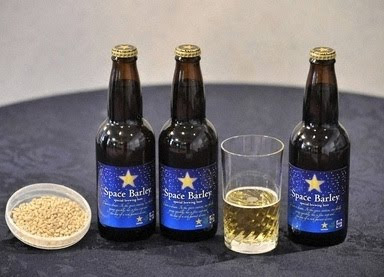Scientists in Spain reported this month that “Drinking beer regularly could stop bones from going brittle.”
Great news, right? Who needs exercise or calcium… all these time, all the International Space Station needed was some rowdy keggers!

Of course, the results may also be a pile of bubbling, fictitious WE-WISH, considering they don’t mention an educational institution, the sample was small and presumably composed of only one generation of Europeans drinking particular ales… and throw in a dash of the least-heeded advice in the history of language: “If it sounds too good to be true, it probably is.”
But anyway. It’s rather amusing. Or it would be if I was a beer drinker. The Nutrition journal published a study saying women who regularly drink beer have stronger bones, making them less likely to suffer from osteoporosis, perhaps because beer is rich in phytoestrogens (plant versions of estrogen) which keep bones healthy.
Beer is touted as a major source of silicon in the western diet, and of course, silicon plays a role in bone formation. A pint a day to keep osteoporosis away? I’m guessing it’s not time to breakout the celebratory maypole ribbons just yet.
Even if there was suddenly a decree to imbibe in space, we’re nowhere near having, say, a brewery on the moon base.

In the past couple of years, I’ve read about Japanese beer brewed from barley grown in micro-gravity on the ISS, and University of Colorado experiments with fermentation in Low Earth Orbit. The latter resulted largely in flat, foamless chemicals. Bubbles are a tricky business in weightlessness, both inside liquids themselves and inside the bodies that ingest those liquids. Absorption and metabolism are very different in space, and thus, so might be the after-affects of any alcohol.
Bioserve Space Technologies and the Coca-Cola company have also partnered with NASA to conduct carbonation and fermentation experiments on Space Shuttles, though I don't recall any particular efforts to scan bones alone, before and after. So until NASA connects the dots on a repeat experiment, should we just take their words as Spaniards? ;)


































































